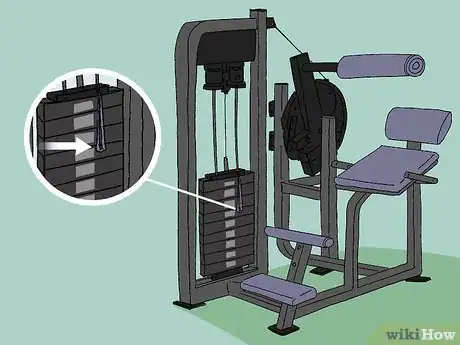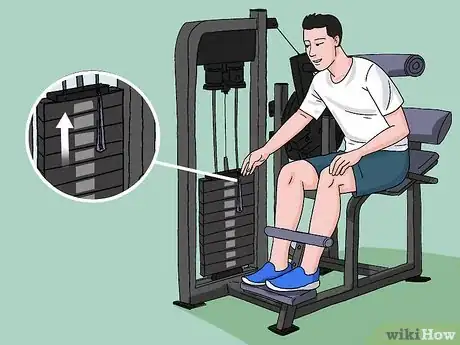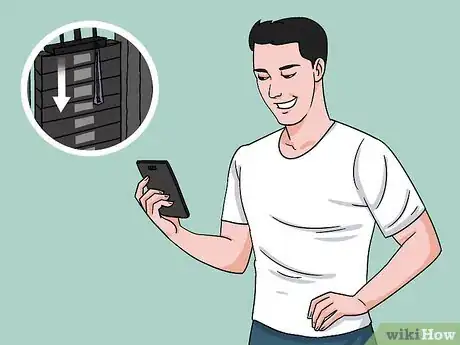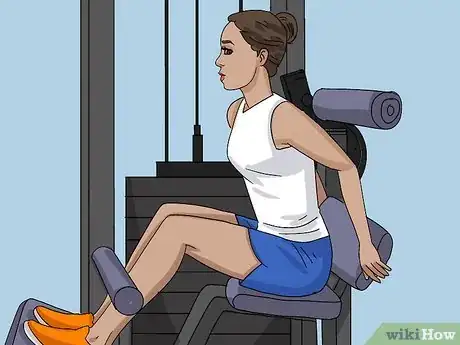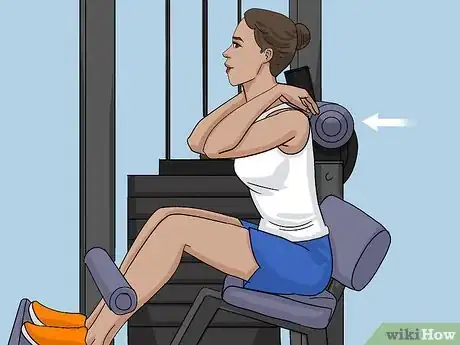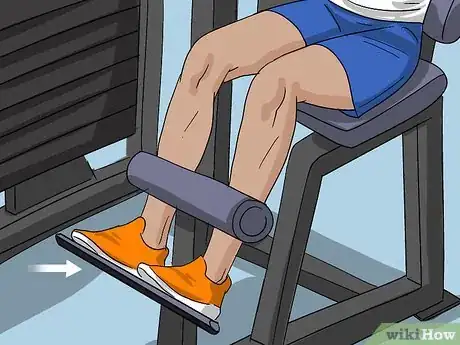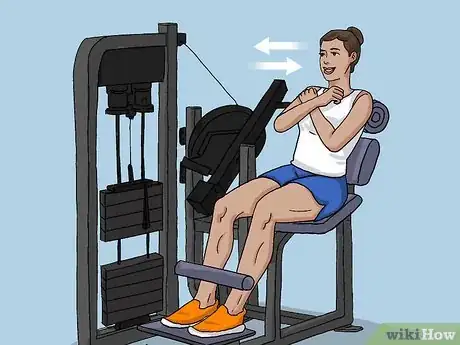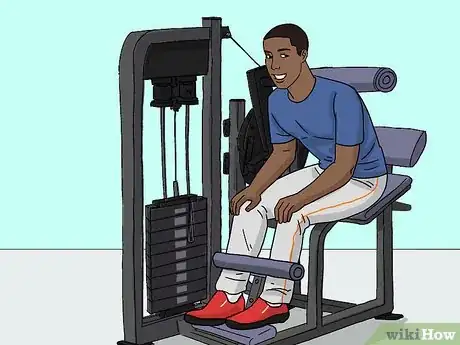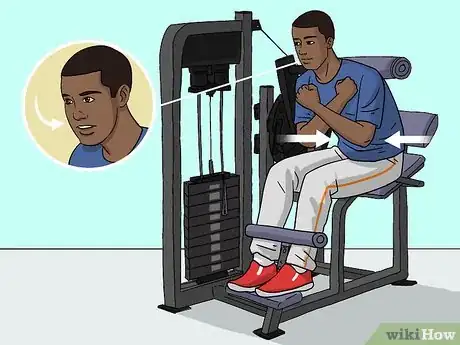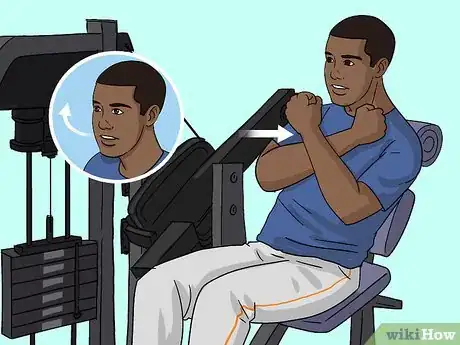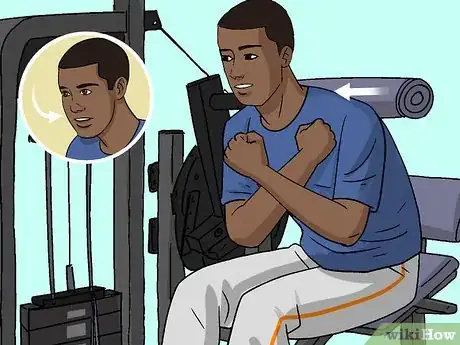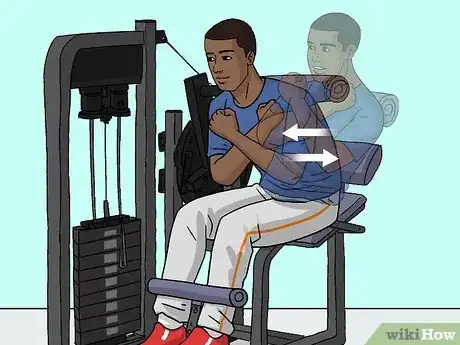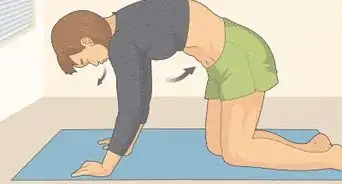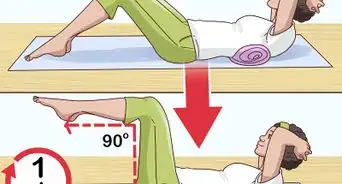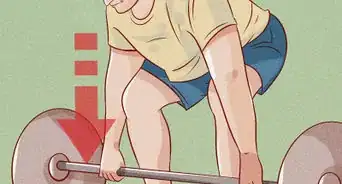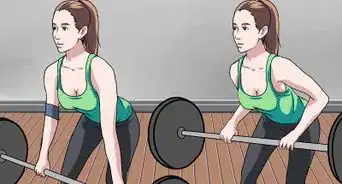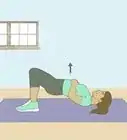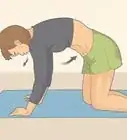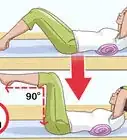This article was co-authored by Monica Morris and by wikiHow staff writer, Danielle Blinka, MA, MPA. Monica Morris is an ACE (American Council on Exercise) Certified Personal Trainer based in the San Francisco Bay Area. With over 15 years of fitness training experience, Monica started her own physical training practice and gained her ACE Certification in 2017. Her workouts emphasize proper warm-ups, cool-downs, and stretching techniques.
There are 10 references cited in this article, which can be found at the bottom of the page.
This article has been viewed 14,022 times.
You might want to try a lower back machine to build a stronger back. Like other exercise machines, the lower back machine is a really convenient way to work out, especially if you’re targeting a specific muscle group. However, figuring out how to use the machine can be really tricky. Fortunately, the lower back machine is fairly easy to use once you’ve gotten some practice.
Steps
Adjusting the Weight
-
1Move the weight pin to choose the amount of weight to lift. Find the pin on the weights. Pull the pin out of its current setting, then move it to the hole near the weight you want. Push the pin into the hole to set the weight.[1]
- For instance, if you wanted to set the weight at 20 lb (9.1 kg), you’d put the pin in the hole next to that weight.
-
2Start with a low weight until you get used to the exercise. You may accidentally hurt yourself if you try to lift too much weight. When you’re getting started, use the lowest setting to make sure it’s okay for you. You can always adjust the machine again if the weight is too light.[2]
- If you experience pain or discomfort, stop using the machine immediately.
Advertisement -
3Increase your weight as you get stronger. When a weight feels too light for you, try the next highest setting. Use that weight until it also feels too easy for you. Slowly increase your weight over time so you’re less likely to injure yourself.[3]
- If you have trouble remembering which weight you use for each machine, keep track of the weights in your phone. That way it’ll be easier to set the weight each time you go to the gym.
Getting into Position
-
1Sit on the attached seat with your back against the cushion. Push your bottom against the back of the seat and adjust yourself until you’re comfortable. Sit up straight so your muscles are engaged, which will help you reduce your risk of injury. Check that your back feels supported.[4]
- Some lower back machines let you adjust the height of the seat. If yours has this feature, use the lever to move the seat up or down until the height feels comfortable.
-
2Adjust the upper roller so it’s against your shoulder blades. The seat should have a padded roller near the top of it. Use the lever on the side of the machine to move the roller backward or forward if necessary to adjust it. Set the roller so it’s comfortably against your shoulder blades.[5]
- The upper roller will push the weights as you lean back.
-
3Place both feet flat on the footrest. Look for the footrest right in front of you. Move your feet onto the footrest and adjust them until you feel comfortable.[6]
- The footrest will likely be a metal plate or bar. It may have rubber on it to help keep your feet from sliding.
-
4Cross your arms over your chest in an "X." If you wiggle around while you’re using the machine, you may accidentally hurt yourself. Keep your arms crossed over your chest to help your core stay tight. This will help you maintain your balance.[7]
Alternative: If the machine has handlebars on the side of the seat, you may prefer to hold onto them to keep your body steady during your workout.[8]
Doing Reps
-
1Lean forward to get into the starting position. Hinge forward at your waist slightly so that you’re leaning forward at a slight angle. Keep your back straight and your face forward. This is your starting position for each rep.[9]
-
2Take a deep breath and tighten your core. Breathe in through your nose and draw the air down into your lungs. As you do this, engage your ab muscles to support you during the rep.[10]
- Try to keep your upper body as straight as possible. This will help you work your muscles while also lowering your risk of hurting yourself.
-
3Exhale as you slowly lean back as low as you comfortably can. Slowly release the air out of your mouth. As you exhale, lean back in the seat, pushing against the weighted roller. Lower your upper body back as far as you can.[11]
- Your movement should be slow, so don’t rock back and forth. Concentrate on keeping your muscles engaged.
- Over time, you can expand your range of motion and go back further. However, it's important to take it slow and listen to your body so you're less likely to get hurt.
- If you experience any pain, stop using the lower back machine until you talk to your doctor.
-
4Inhale as you slowly come back up to complete 1 rep. Slowly breathe in through your nose as you bring your upper body back to the start position. Then, slowly exhale through your mouth to finish your rep.[12]
- Take your time as you come back up. This can work both your abs and your lower back muscles.
-
5Repeat for your desired number of reps. Since there’s no recommended number of reps for a lower back machine, choose a rep goal that fits your needs. You might start out with a goal of 10-12 reps until you get used to the machine. Then, you might increase your goal up to 25 reps. Do 2-3 sets on the lower back machine 2-3 times per week.[13]
- As an alternative, you might start with 10 reps at each weight and slowly work your way up to 25 as the weight becomes easier. When 25 reps feel easy, move up to the next weight.
- If you’ve worked with a trainer, use the rep goal they gave you for the lower back machine.
- Since the lower back machine is a strength training workout, only use it 2-3 times per week to work your upper body.
Warnings
- Talk to your doctor before using a lower back machine to make sure it’s safe for you.⧼thumbs_response⧽
- Stop immediately if you experience any pain while using the machine. You may accidentally injure yourself.⧼thumbs_response⧽
Expert Interview

Thanks for reading our article! If you'd like to learn more about working out, check out our in-depth interview with Monica Morris.
References
- ↑ https://www.youtube.com/watch?v=mwHMvmKcrU0&feature=youtu.be&t=14
- ↑ http://www.weakbackbuilder.com/strengthening-exercises/back-extension-machine-exercise/
- ↑ http://www.weakbackbuilder.com/strengthening-exercises/back-extension-machine-exercise/
- ↑ https://www.youtube.com/watch?v=aPuOyFuLxDY&feature=youtu.be&t=44
- ↑ https://www.youtube.com/watch?v=I5OUhko12pk&feature=youtu.be&t=56
- ↑ https://www.youtube.com/watch?v=aPuOyFuLxDY&feature=youtu.be&t=46
- ↑ https://www.youtube.com/watch?v=aPuOyFuLxDY&feature=youtu.be&t=49
- ↑ http://www.weakbackbuilder.com/strengthening-exercises/back-extension-machine-exercise/
- ↑ https://www.youtube.com/watch?v=I5OUhko12pk&feature=youtu.be&t=62
